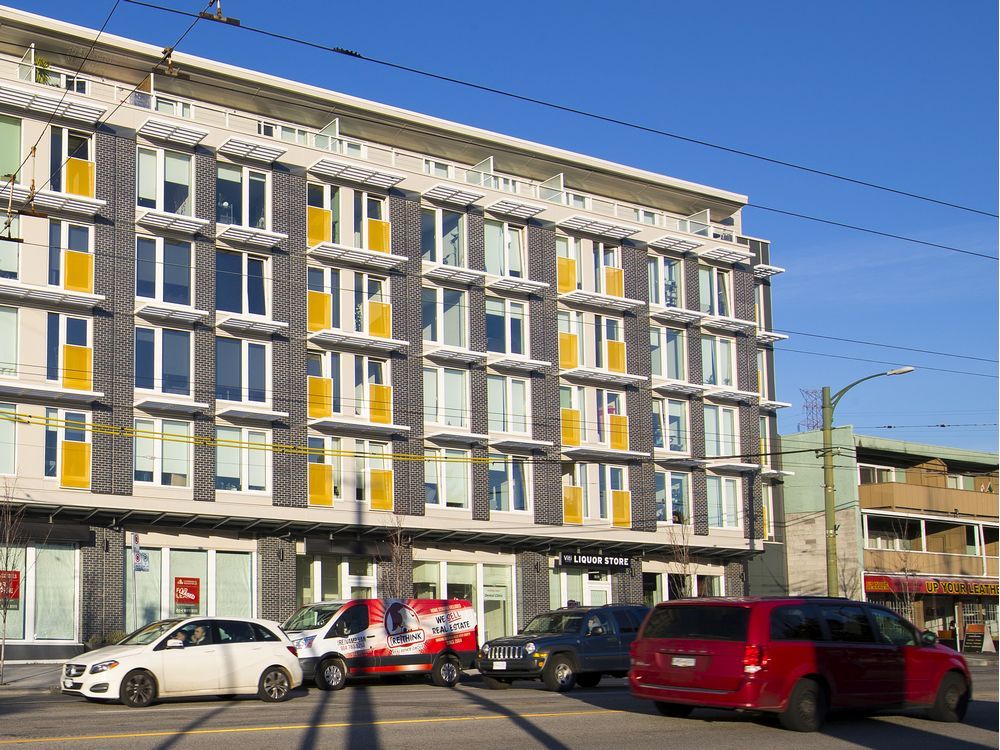Four-storey apartment buildings could replace houses on more Vancouver side streets

Credit to Author: Dan Fumano| Date: Fri, 22 Nov 2019 02:46:32 +0000
Many side streets dominated by detached houses in residential neighbourhoods throughout Vancouver could soon be opened up to four-storey apartment buildings.
Next week, council will consider a staff report containing recommendations for enhancing the city’s policies for boosting construction of purpose-built rental housing. With Vancouver’s persistently low vacancy rates and rising rents, senior staff and most city councillors have emphasized the importance of increasing the supply of both non-profit and market rental homes.
The 236-page report includes 10 recommendations from staff, including supporting repairs of old buildings, making it easier to build six-storey, mixed-use buildings on main streets and allowing four-storey apartment buildings on side streets in previously low-density residential areas.
Mayor Kennedy Stewart, who campaigned last year on a platform of dramatically increasing rental housing production, said the report is “a very good effort by staff to give us their best policy ideas on how we can add thousands of more rental units, all over the city in different neighbourhoods.”
More than 60 per cent of Vancouver’s current rental housing stock was built between 1950 and 1980, after which time the local construction market largely focused on condos and houses, housing types that are now unaffordable for many Vancouverites. Vancouver city staff say incentives are required to encourage the private sector to build rentals instead of strata projects, and a staff report in July said Vancouver’s policies in the last decade have helped turn the tide and boost rental construction. Still, though, the city lags far behind its own targets.
Mixed-use buildings, with commercial space on the ground floor and rental apartments above, currently line many of the city’s main streets. But the new report recommends “pre-zoning” to allow such projects to be built without a public hearing and rezoning process, which staff estimates could shave a year off the timeline.
Another change would allow four-storey rental apartment or townhouse buildings in “low-density transition areas” — defined as residential blocks within 150 metres from an arterial street. Some Vancouver neighbourhoods, such as Kitsilano and Mount Pleasant, already include many such buildings off of arterial streets. But the proposed change would open up many more parts of Vancouver to these buildings, including much of the less-dense southern half of the city, on both the east and west sides.
Asked if he expects some homeowners and neighbourhood associations might object to apartment buildings on side streets, Stewart said: “I think it’s something to digest. But all of us on council say we’re in the middle of a housing crisis, and if you’re in a crisis, you have to do something new.
“There’s a lot to consider, but in the end, if we pass this, we’ll really be doing what the public wants, which is to build more rental housing,” said Stewart, reached Thursday by phone in Ottawa, where he’s meeting with federal leaders.
LISTEN: The NDP government feels the pressure from a planned strike by bus drivers in Metro Vancouver, the premier sets a new “federal lead” MLA on cell-phone pricing, ICBC limps toward online renewals, and more this week in B.C. politics.
Listen and subscribe to our podcast from your mobile device:
via Apple podcasts | via Google Play | via Stitcher
Is the player not working? Click here.
But city policies aimed at boosting rental housing have often been met with fierce opposition from some residents. One program, the Moderate Income Rental Housing Pilot Project, or MIRHPP, has already generated controversy and neighbourhood opposition before a single building has been approved.
MIRHPP would allow developers to build larger rental buildings in exchange for securing a certain number of permanently affordable homes, and the new staff report recommends extending the program.
While some homeowners have opposed the MIRHPP proposals and at least one councillor, NPA Coun. Colleen Hardwick, has already openly criticized the program, others, including the mayor, have hailed it as the city’s best chance to build “workforce housing.”
The city selected 20 developments for the pilot project, 10 of which have submitted rezoning applications so far. The buildings range from five storeys to 28, and represent a total of 1,162 rental homes. The first proposals are expected to come before council by the end of this year.
The rental policy report is on the agenda for Tuesday’s council meeting.